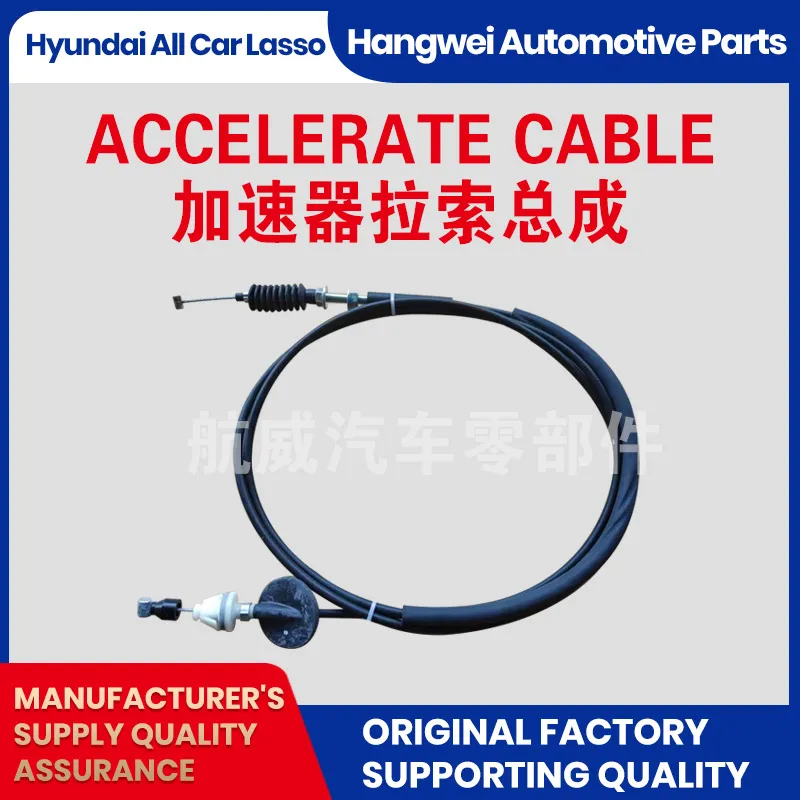Adjusting the Throttle Cable for Improved Vehicle Performance and Responsiveness
The Importance of the Gas Pedal Cable in Vehicle Performance
The gas pedal cable, often referred to as the throttle cable, is a crucial component in the operation of gas-powered vehicles. This seemingly simple piece of equipment serves as the vital link between the driver’s input and the engine's performance. Understanding the gas pedal cable's functionality, maintenance, and potential issues can greatly enhance a driver’s experience and the longevity of their vehicle.
Functionality of the Gas Pedal Cable
In traditional vehicles, when a driver depresses the gas pedal, this motion is transmitted through the gas pedal cable to the throttle body, which controls the air-fuel mixture entering the engine. This system operates on a mechanical basis, creating a direct connection between the driver’s foot and the engine's power output. The more the pedal is pressed, the wider the throttle opens, allowing more air and fuel into the engine, thereby increasing speed.
Although many modern vehicles have transitioned to electronic throttle control (ETC) systems, the basic principles remain similar. In ETC systems, sensors detect the gas pedal's position and send signals to the engine control unit (ECU) to adjust the throttle electronically. However, even in these systems, the idea of effectively transferring the driver’s intention into vehicular acceleration remains the same.
Maintenance of the Gas Pedal Cable
Maintaining the gas pedal cable is essential for optimal vehicle performance. Over time, cables can become frayed, sticky, or even break due to wear and tear. Regular inspections and maintenance can prevent potential issues that might lead to unsafe driving conditions or reduced vehicle efficiency.
Drivers should visually inspect the cable for any signs of damage, particularly near the throttle body and where it connects to the gas pedal. Lubrication of the cable is typically recommended to ensure smooth operation; however, care must be taken not to over-lubricate, as this can attract dirt and cause further issues.
gas pedal cable

Additionally, it is crucial to check the cable's tension. If the cable is too loose, it can lead to delayed throttle response, whereas excessive tension can make the pedal feel stiff, which could be unsafe in critical driving situations. Consult a professional mechanic if any irregularities in the cable’s operation are detected.
Signs of a Failing Gas Pedal Cable
Awareness of the signs indicating a failing gas pedal cable can save drivers from hazardous situations. Common indicators include unusual resistance or looseness in the gas pedal, unexpected acceleration or deceleration, and unusual noises during throttle operation.
If a driver experiences a sticking throttle, where the pedal does not return to its original position after being released, immediate attention is required. This can pose severe safety risks as it compromises the driver’s ability to control the vehicle properly.
In modern automobiles with electronic throttle control, warning signs may manifest differently. Drivers might notice erratic engine behavior or warning lights on the dashboard signaling a problem with the throttle system.
Conclusion
In summary, the gas pedal cable, whether in a conventional or modern electronic system, is a vital component that significantly impacts a vehicle’s performance. Regular maintenance, awareness of potential issues, and prompt responses to signs of failure are essential for ensuring a safe and efficient driving experience. By understanding and caring for this critical link between the driver and the engine, individuals can help prolong their vehicle's life while enjoying a smoother ride.
-
Upgrade Your Control with Premium Throttle CablesNewsAug.08,2025
-
Stay in Control with Premium Hand Brake CablesNewsAug.08,2025
-
Experience Unmatched Performance with Our Clutch HosesNewsAug.08,2025
-
Ensure Safety and Reliability with Premium Handbrake CablesNewsAug.08,2025
-
Enhance Your Vehicle with High-Performance Clutch LinesNewsAug.08,2025
-
Elevate Your Ride with Premium Gear CablesNewsAug.08,2025
